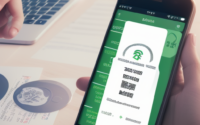Using RFID and IoT for Asset Tracking
Using RFID and IoT for Asset Tracking
Introduction to RFID and IoT:
Radio Frequency Identification (RFID) and Internet of Things (IoT) technologies have revolutionized asset tracking by enabling businesses to efficiently monitor and manage their valuable assets in real-time. RFID uses electromagnetic fields to automatically identify and track tags attached to objects, while IoT connects these RFID tags to the internet, allowing seamless communication and data exchange between devices.
Benefits of RFID and IoT in Asset Tracking:
1. Real-time visibility: RFID and IoT provide real-time visibility into the location and status of assets, enabling businesses to make informed decisions and prevent loss or theft.
2. Improved efficiency: Automation of asset tracking processes leads to improved efficiency and reduced human errors. Assets can be easily located and monitored without manual intervention.
3. Cost savings: By streamlining asset management operations, businesses can reduce operational costs, optimize resource allocation, and minimize asset downtime.
4. Enhanced security: RFID and IoT systems enhance asset security by enabling features such as access control, tamper detection, and alerts for unauthorized movements or theft.
Components of RFID and IoT Asset Tracking System:
1. RFID tags: Small, durable tags that are attached to assets to uniquely identify and track them.
2. RFID readers: Devices that read information from RFID tags and communicate it to the IoT platform.
3. IoT platform: Centralized software platform that receives data from RFID readers, processes information, and presents it to users in a user-friendly interface.
4. Cloud connectivity: Enables data storage, analysis, and remote access to asset tracking information.
5. Sensors: Optional components that can be integrated with RFID tags to monitor environmental conditions or asset usage.
Implementing RFID and IoT Asset Tracking:
1. Define asset tracking goals: Identify the assets to track, the desired level of visibility and control, and key performance indicators (KPIs) for tracking success.
2. Select RFID tags and readers: Choose RFID tags suitable for the asset type, environment, and required read range. Select RFID readers based on compatibility with the tags and deployment location.
3. Choose an IoT platform: Select an IoT platform that is scalable, integrates seamlessly with RFID systems, offers analytics capabilities, and meets security requirements.
4. Deploy RFID infrastructure: Install RFID readers at strategic locations, place RFID tags on assets, and ensure proper connectivity between the readers and IoT platform.
5. Configure asset tracking workflows: Define workflows for asset tracking, including data collection frequency, notifications, alerts, and reporting mechanisms.
6. Monitor and optimize: Continuously monitor asset tracking performance, analyze data insights, and optimize processes to improve efficiency and effectiveness.
Use Cases of RFID and IoT Asset Tracking:
1. Inventory management: Retailers can use RFID and IoT to automate inventory counts, prevent stockouts, and improve replenishment processes.
2. Equipment tracking: Manufacturing plants can track machinery and tools using RFID tags, optimizing maintenance schedules and reducing downtime.
3. Supply chain visibility: Logistics companies can enhance supply chain visibility by tracking shipments in real time, optimizing routes, and reducing delays.
4. Security and compliance: Organizations can ensure compliance with regulatory requirements and enhance security by tracking high-value assets, sensitive documents, and restricted access areas.
Challenges and Considerations:
1. Cost: Initial investment in RFID and IoT infrastructure can be high, depending on the scale of asset tracking implementation.
2. Integration complexity: Integrating RFID and IoT systems with existing enterprise software and hardware can be challenging, requiring expertise in both technologies.
3. Data security: Protecting sensitive asset tracking data from cyber threats, data breaches, and unauthorized access is crucial for maintaining trust and compliance.
4. Scalability: As the volume of tracked assets grows, scalability of RFID and IoT systems becomes a key consideration to ensure seamless performance and data management.
Conclusion:
RFID and IoT technologies offer a powerful solution for efficient and effective asset tracking, providing real-time visibility, improved efficiency, cost savings, and enhanced security. By understanding the components, implementation steps, use cases, and challenges associated with RFID and IoT asset tracking, businesses can leverage these technologies to optimize asset management processes and drive operational excellence.

